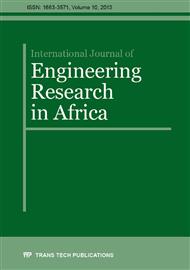[1]
E. Foo and R. Goodall, Active suspension control strategies for flexible-bodied railway vehicles, UKACC International Conference on Control (1998) 1300 – 1305.
DOI: 10.1049/cp:19980415
Google Scholar
[2]
E. Foo and R. M. Goodall, Active suspension control strategies for flexible-bodied railway vehicles using electro-hydraulic and electro-magnetic actuators, Control Engineering Practice, 8 (2000) 507 – 518.
DOI: 10.1016/s0967-0661(99)00188-4
Google Scholar
[3]
I. Pratt, Active suspensions applied to railway trains, PhD Thesis, Loughborough University, UK, 1996.
Google Scholar
[4]
X. Zheng, A. C. Zolotas and R. M. Goodall, Modeling of flexible-bodied railway vehicles for vibration suppression, ICSE, Coventry, UK, (2006).
Google Scholar
[5]
P. E. Orukpe, I. M. Jaimoukha and H. M. H. El-Zobaidi, Model predictive control based on mixed H2/H∞ control approach, Proceedings of American Control Conference, New York, USA (2007) 6147 – 6150.
DOI: 10.1109/acc.2007.4282873
Google Scholar
[6]
P. E. Orukpe, X. Zheng, I. M. Jaimoukha, A. C. Zolotas and R. M. Goodall, Model predictive control based on mixed H2/H∞ control approach for active vibration control of railway vehicles, Journal of Vehicle System Dynamics, 46 (Supplement) (2008) 151 – 160.
DOI: 10.1080/00423110701882371
Google Scholar
[7]
P. E. Orukpe, Model predictive control for linear time invariant systems using linear matrix inequality techniques, PhD Thesis, Imperial College London, UK, 2009.
Google Scholar
[8]
A. Orvnas, Methods for reducing vertical carbody vibrations of a rail vehicle: a literature survey, Report in Rail Technology, Stockholm, Sweden, 2010.
Google Scholar
[9]
H. Dong, B. Ning, B. Cai and Z. Hou, Automatic train control system development and simulation for high-speed railways, IEEE Circuits and Systems Magazine, Second Quarter (2010) 6 – 18.
DOI: 10.1109/mcas.2010.936782
Google Scholar
[10]
A. Orvnas, S. Stichel and R. Persson, Active lateral secondary suspension with H∞ control to improve ride comfort: simulations on a full-scale model, Vehicle System Dynamics 49(9) (2011) 1409 – 1422.
DOI: 10.1080/00423114.2010.527011
Google Scholar
[11]
R. M. Goodall and T. X. Mei, Active suspensions, in: S. Iwnicki (Ed), Handbook of Railway Vehicle Dynamics, CRC Press, Florida, 2006, p.327 – 358.
DOI: 10.1201/9781420004892.ch11
Google Scholar
[12]
B. Dumitrescu, Bounded real lemma for FIR/MIMO systems, IEEE Signal Processing Letters 12(7) (2005) 496 – 499.
DOI: 10.1109/lsp.2005.849496
Google Scholar
[13]
A. A. Shabana and J. R. Sany, A survey of rail vehicle track simulations and flexible multibody dynamics, Nonlinear Dynamics 26 (2001) 179 – 210.
Google Scholar
[14]
J. Zhou, R. Goodall, L. Ren and H. Zhang, Influences of car body vertical flexibility on ride quality of passenger railway vehicles, Journal of Rail and Rapid Transit 223 (F5) 2009 461 – 471.
DOI: 10.1243/09544097jrrt272
Google Scholar
[15]
CEN, EN 12299, Railway Applications – Ride Comfort for Passengers, Measurement and evaluation, Brussels, 2009.
Google Scholar


